Register to unlock your exclusive B2B prices and start shopping. Sign up now!
Push button KNX Universal push-button module 3
Order only
Price (excl. VAT):
192,94 €
EAN: 4011377149045
MPN: 4193TSM
Box: 1
Estimate delivery time at our warehouse (approx.):
4-6 weeks
Technical Information
| Item condition | New |
| Manufacture name | Push button KNX Universal push-button module 3 |
| Brand | Jung |
| Categories |
Bus System Devices (KNX/Modbus)
|
| Country of origin* | DE |
| * The actual country of origin may differ depending on the delivery batch. To confirm the specific country of origin, please contact your account manager. | |
| Harmonized System Code | 8536 5011 00 |
| Bus system KNX | Yes |
| Bus system radio frequent | No |
| Bus system Powernet | No |
| Bus system LON | No |
| Bus system KNX radio | No |
| Radio frequent bidirectional | No |
Packing details
| Packing level 1 | 4011377149045 |
| Packing level 2 | 4011377149045 |
Other Technical data
| Mounting method | Flush mounted (plaster) |
| With display | No |
| With IR sensor | No |
| With room temperature controller | No |
| With bus connection | Yes |
| Material | Plastic |
| Number of buttons | 0 |
| With anti-theft/dismantling protection | Yes |
| RAL-number (similar) | 0 |
| With label area | No |
| With LED indication | Yes |
| Transparent | No |
| Number of actuation points | 6 |
| Min. depth of built-in installation box | 0 mm |
Downloads
Description
Universal push-button module functions as an interface for KNX bus systems, enabling complex automation tasks in building control systems.Designed for seamless integration with flush-mounted installations (plaster).Constructed from durable plastic material, it ensures robust operation and consistent performance over time. Equipped with LED indication to enhance visibility of operational status.Built-in anti-theft/dismantling protection integrated into its design for high-security environments.Six actuation points allow flexible interaction capabilities, tailored to specific system requirements.Fully compatible with the KNX bus system protocol;no support for radio frequency or alternative bus systems defined—strictly a standard wired KNX device.Designed to integrate directly into existing wiring setups through embedded bus connection features within the unit architecture, minimizing installation complexity and optimizing scalability across various configurations.
Accessories
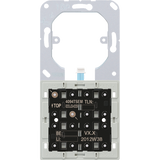
Order only
Jung
Push button KNX Push button extension module
112,22 €
EAN: 4011377036789
MPN: 4094TSEM
Box: 1
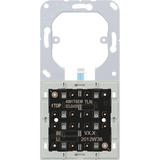
Order only
Jung
Push button KNX Universal pb exten. module
91,79 €
EAN: 4011377053540
MPN: 4091TSEM
Box: 1
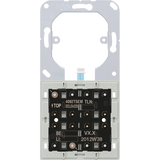
Order only
Jung
Push button KNX Universal pb exten. module
97,25 €
EAN: 4011377053557
MPN: 4092TSEM
Box: 1
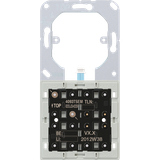
Order only
Jung
Push button KNX Universal pb exten. module
103,72 €
EAN: 4011377053564
MPN: 4093TSEM
Box: 1
Follow-up
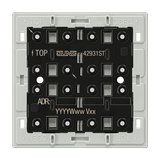
Order only
Jung
Universal push-button module 3-gang
172,58 €
EAN: 4011377321199
MPN: 42931ST
Package: 1




